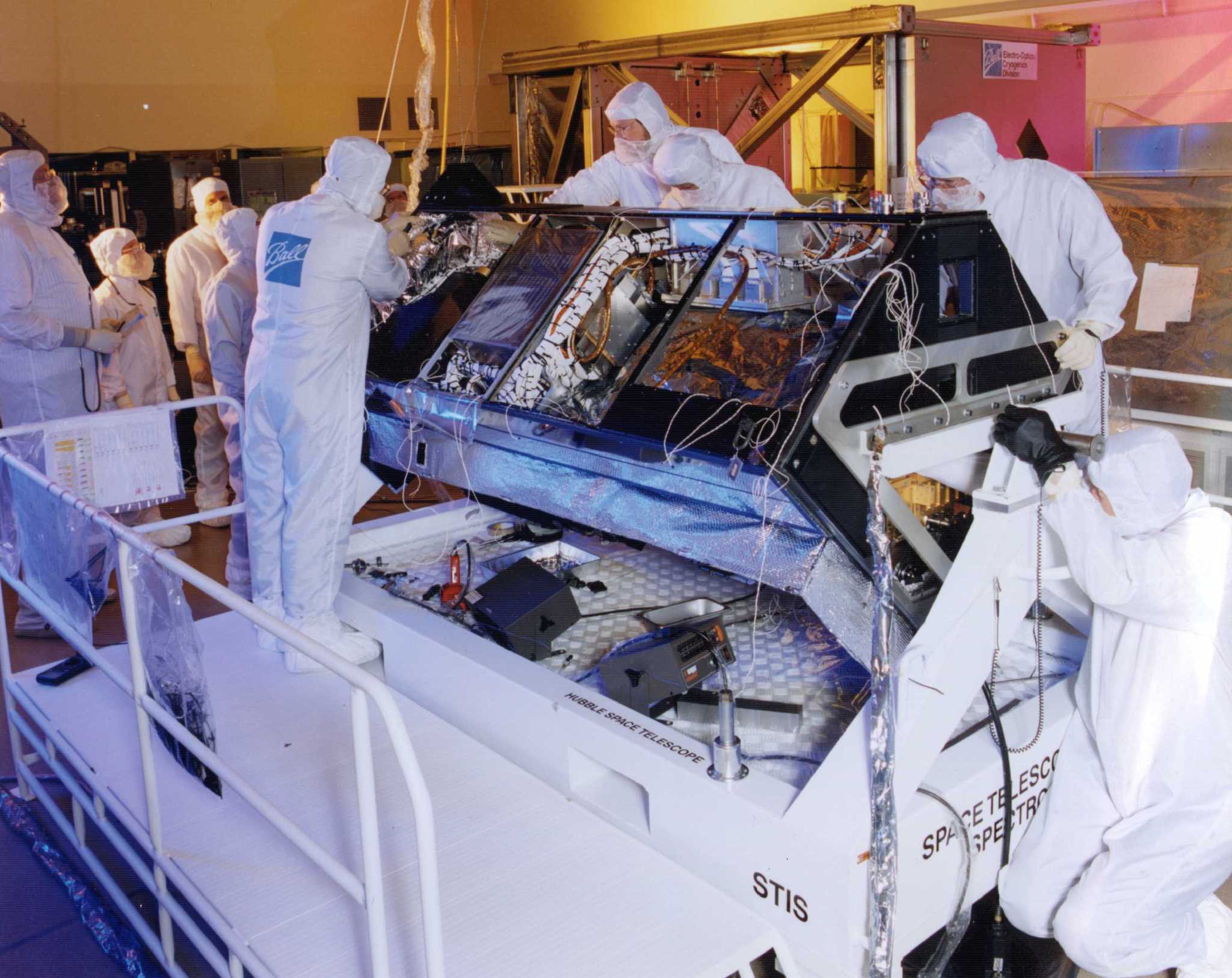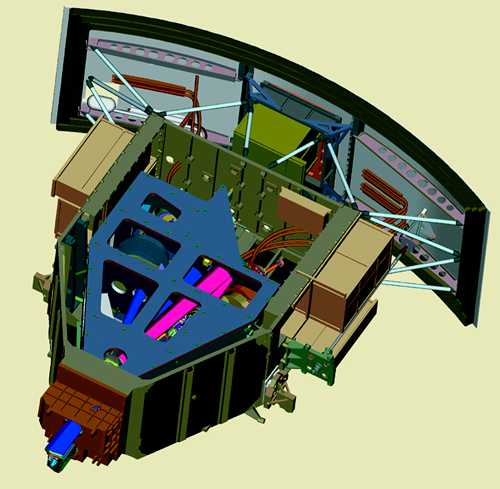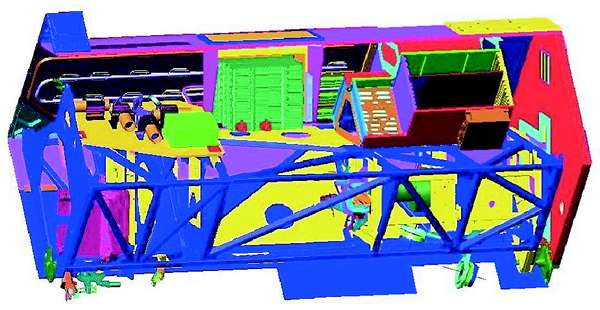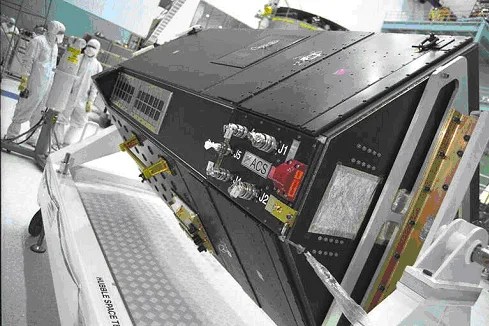Wide Field Camera 3 (WFC3) (new instrument)
With a "panchromatic" grasp of light extending from the ultraviolet through the visible and into the infrared, Wide Field Camera 3 (WFC3) will be an extremely powerful imaging instrument that will take Hubble's hallmark--the spectacular image--to new levels in the exploration of the "local neighborhood" of the solar system and Milky Way, as well as the remote universe of distant galaxies. WFC3, which will take over as Hubble's workhorse instrument, will replace the Wide-Field Camera 2 (WFPC2), which was installed during the 1993 First Servicing Mission and has performed extraordinarily for nearly fifteen years.
If the SM4 astronauts are successful in their repair of the Advanced Camera for Surveys (ACS), which was installed on Hubble in 2002 during Servicing Mission 3B and produced many stunning views of the universe, then WFC3's uniquely powerful capabilities will be augmented by several important features which are unique to ACS. WFC3 is viewed as an important bridge to the infrared observations that will be carried out with the James Webb Space Telescope (JWST) following its launch.
Cosmic Origins Spectrograph (COS) (new instrument)
The Cosmic Origins Spectrograph (COS) was designed with one overriding objective in mind: to collect as many ultraviolet photons of light as possible and hence make possible the effective study of the huge, dark reservoir of gas that exists between the galaxies both near and far--the so-called "cosmic web" of matter which represents the largest-scale structure in the universe. COS, which will be the most powerful ultraviolet spectrograph ever flown on Hubble or on any other spacecraft for the foreseeable future, will take the place of the Corrective Optics Space Telescope Axial Replacement (COSTAR), which was installed during the 1993 First Servicing Mission to correct the "vision" of the other three axial instruments which were in the telescope at that time.
As is the case with the WFC3-ACS camera pair, COS and the Space Telescope Imaging Spectrograph (STIS, installed in the Second Servicing Mission in 1997) were designed to be complementary. Should the SM4 astronauts succeed in their repair effort on STIS, COS's unique spectroscopic capabilities will be augmented by those features which are unique to STIS.
Space Telescope Imaging Spectrograph (STIS) (instrument repair)

The Space Telescope Imaging Spectrograph (STIS) is a powerful general-purpose spectrograph that is arguably the most versatile instrument ever flown on Hubble. Installed on the telescope during the Second Servicing Mission in 1997, STIS worked brilliantly for 7.5 years before the failure of a five-volt power supply in August of 2004 interrupted operations. Among its most heralded discoveries were the first detection of chemical species in the atmosphere of an extrasolar planet, and the routine detection of supermassive black holes at the centers of galaxies. SM4 astronauts will attempt to repair STIS by replacing the electronics board that contains the failed power supply.
Advanced Camera for Surveys (ACS) (instrument repair)
When it was flown to Hubble in Servicing Mission 3B in 2002, the Advanced Camera for Surveys (ACS) expanded Hubble's imaging "discovery power" by a factor of 10 times over the existing WFPC2. Notable among its many scientific achievements were the Hubble Ultra Deep Field (the deepest look yet at the distant universe) and the efficient detection of distant supernovae critical to studies of "Dark Energy." In January of 2007, ACS ended 5 years of successful operation of its two CCD detectors when an intense electrical short occurred in its electronics. The SM4 astronauts will attempt to bring ACS back to full operation by mounting a new power supply on ACS's outer surface as well as replacing four detector electronics boards.

































